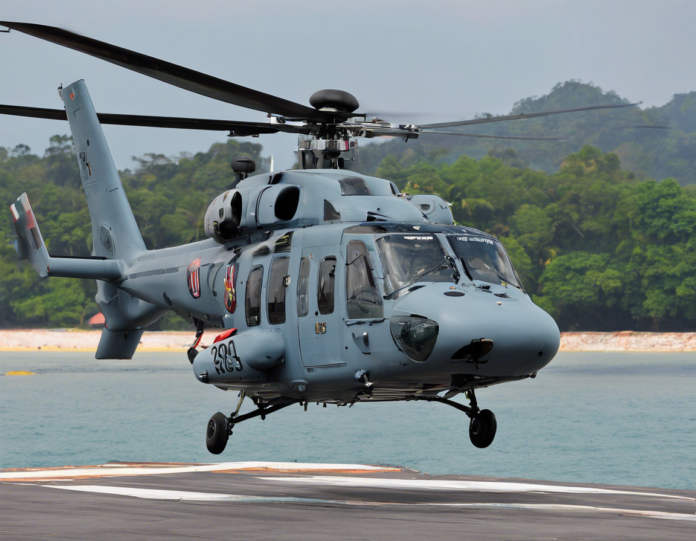Introduction
Malaysia is a country with a rich maritime history and a strategic location in Southeast Asia. The Malaysian Navy plays a crucial role in protecting the country’s maritime interests, and helicopters are an integral part of its naval capabilities. In this comprehensive guide, we will delve into the world of Malaysian Navy helicopters, exploring their types, roles, capabilities, and significance in naval operations.
Types of Malaysian Navy Helicopters
The Royal Malaysian Navy operates a diverse fleet of helicopters that serve various roles within the maritime domain. Two primary types of helicopters are commonly used by the Malaysian Navy:
1. Super Lynx
The Super Lynx helicopter is a versatile maritime helicopter that has been in service with the Royal Malaysian Navy since the early 2000s. It is a twin-engine helicopter known for its agility, speed, and endurance. The Super Lynx is primarily used for anti-surface and anti-submarine warfare, as well as search and rescue missions.
2. EC725 Caracal
The EC725 Caracal helicopter is a medium-lift utility helicopter that has recently been introduced into the Royal Malaysian Navy’s fleet. This helicopter is capable of carrying out a wide range of missions, including troop transport, medical evacuation, and maritime surveillance. The EC725 Caracal is known for its advanced avionics systems, spacious cabin, and impressive endurance.
Roles and Capabilities
Malaysian Navy helicopters play a vital role in supporting naval operations and enhancing maritime security. Some of the key roles and capabilities of these helicopters include:
- Anti-Surface Warfare: Malaysian Navy helicopters are equipped with advanced radar and sensor systems that enable them to detect and engage surface targets effectively.
- Anti-Submarine Warfare: Helicopters play a crucial role in hunting down and neutralizing enemy submarines using sonar systems and torpedoes.
- Search and Rescue: Malaysian Navy helicopters are often called upon to conduct search and rescue missions in the vast maritime expanse of the country’s waters.
- Maritime Surveillance: Helicopters are instrumental in conducting maritime patrols, enforcing coastal security, and monitoring maritime traffic for any suspicious activity.
- Medical Evacuation: In times of crisis or emergencies, helicopters are used to evacuate injured personnel from ships at sea to medical facilities on the mainland.
Significance in Naval Operations
The deployment of helicopters significantly enhances the Malaysian Navy’s operational capabilities and effectiveness in a wide range of scenarios. Some of the key ways in which helicopters contribute to naval operations include:
- Extended Reach: Helicopters can cover large areas of the maritime domain quickly and effectively, providing naval forces with enhanced situational awareness and response capabilities.
- Versatility: Helicopters are highly versatile platforms that can be rapidly reconfigured to carry out different missions, making them indispensable assets in naval operations.
- Force Multiplier: By extending the reach and capabilities of surface vessels, helicopters serve as force multipliers that enhance the overall effectiveness of naval task forces.
- Rapid Response: Helicopters offer rapid response capabilities, allowing the Malaysian Navy to react swiftly to emerging threats, conduct search and rescue operations, and support disaster relief efforts.
Future Developments
The Royal Malaysian Navy is continually exploring ways to enhance its helicopter capabilities to meet evolving security challenges and operational requirements. Some of the potential future developments in Malaysian Navy helicopters may include:
- Integration of Unmanned Systems: The integration of unmanned aerial vehicles (UAVs) with helicopters could enhance the Navy’s intelligence, surveillance, and reconnaissance capabilities.
- Upgraded Sensor Suites: Advances in sensor technology could lead to the integration of advanced sensors on Malaysian Navy helicopters, improving their detection and tracking capabilities.
- Enhanced Multi-Mission Capabilities: Future helicopters may be designed to be more adaptable to different mission profiles, allowing them to switch seamlessly between roles as needed.
FAQs
1. What is the role of helicopters in maritime operations?
Helicopters play a crucial role in maritime operations by providing aerial support for surface vessels, conducting surveillance missions, and engaging in anti-submarine warfare.
-
How do Malaysian Navy helicopters contribute to maritime security?
Malaysian Navy helicopters enhance maritime security by patrolling territorial waters, monitoring maritime traffic, and responding to security threats in the maritime domain. -
What advanced capabilities do Malaysian Navy helicopters possess?
Malaysian Navy helicopters are equipped with advanced radar, sensor systems, sonar technology, and weapon systems that enable them to effectively carry out a wide range of missions. -
Are Malaysian Navy helicopters involved in international maritime exercises?
Yes, Malaysian Navy helicopters often participate in joint exercises with regional and international partners to enhance interoperability, share best practices, and strengthen maritime security cooperation. -
How are Malaysian Navy helicopter crews trained?
Malaysian Navy helicopter crews undergo rigorous training programs that focus on aeronautical skills, mission planning, maritime operations, and emergency procedures to ensure operational readiness.
Conclusion
In conclusion, Malaysian Navy helicopters play a vital role in protecting the country’s maritime interests, enhancing maritime security, and supporting naval operations. With their advanced capabilities, versatility, and operational effectiveness, helicopters serve as indispensable assets that enable the Malaysian Navy to respond swiftly to emerging threats, conduct a wide range of missions, and safeguard the nation’s maritime domain. As the Royal Malaysian Navy continues to modernize and upgrade its fleet, the role of helicopters is expected to remain central to its maritime strategy for the foreseeable future.










